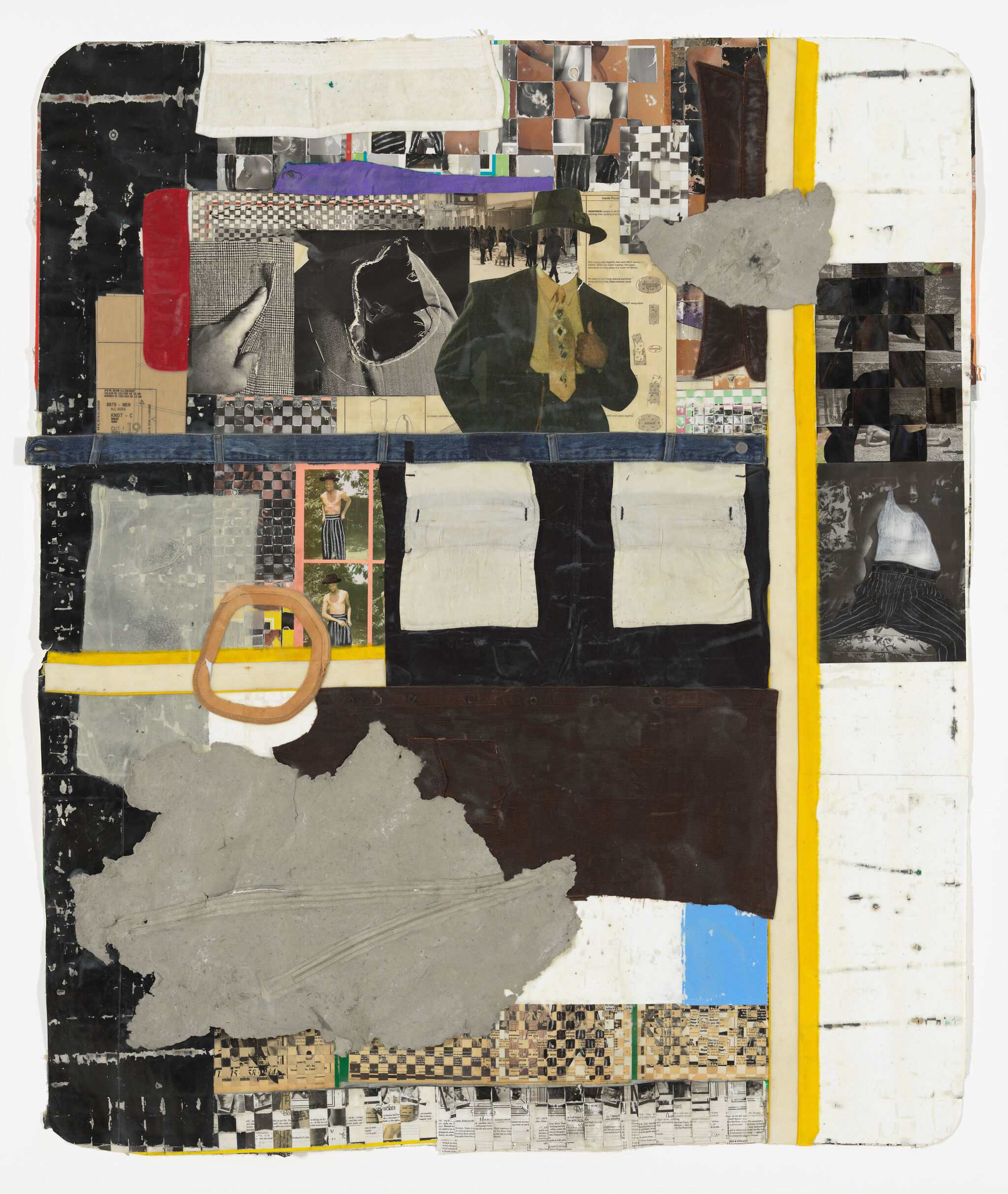Shifting Landscapes | Art & Artists
Borderlands
4
Rather than accepting the border between the US and Mexico as a fixed and immutable geopolitical line, artists working in the region propose that this part of the American landscape is an herida abierta or open wound—as the Chicana scholar Gloria Anzaldúa described it in her 1987 book Borderlands/La Frontera— where loss and regeneration coexist. Enrique Chagoya, for example, employs a satirical approach in his codices, made in the tradition of ancient Mesoamerican manuscripts, that tell the history of Western civilization from the perspective of the colonized, while Leslie Martinez draws inspiration from the rugged geography of their native south Texas by sewing rags and other recycled materials to their canvases to evoke a landscape marked by pain but also healing. The works gathered here consider political, cultural, and spiritual borderlands as manifestations of a landscape straddling two realities at once, revealing the creative forces that can grow from the grief of historical trauma, erasure, and omission.
Troy Michie
Yo Soy Un Puente Tendido / This Is My Home, 2019
Incorporating a wide range of materials—including found photographs, papier-mâché, and elements of clothing— Troy Michie’s works materialize the ways that historically marginalized communities are often alternately erased and fetishized, made invisible and hypervisible. Yo Soy Un Puente Tendido/This Is My Home includes photography from the pages of vintage pornographic magazines that exclusively featured men of color, collaged by the artist in ways that withhold intimate details. Similarly, by including zoot suit fragments alongside figures whose faces are blank, Michie implies that there is difficulty in preserving one’s visibility against a backdrop of cultural bias. The zoot suit is a flashy, roomy menswear style that was popular in African American communities throughout the 1930s and 1940s as well as in Pachuco lifestyle, the Mexican American youth subculture that originated around that same time in the artist’s hometown of El Paso, which sits along the US-Mexico border. With its layered history, the zoot suit is a reminder of the ways self-fashioning can both advertise and disguise aspects of race, class, and gender.
Learn which materials Michie used to make this work.
Artists
- Robert Adams
- Yuji Agematsu
- Laura Aguilar
- John Ahearn
- Felipe Baeza
- Firelei Báez
- Melvonna Ballenger
- Orian Barki
- Jean-Michel Basquiat
- Meriem Bennani
- María Berrío
- Diane Burns
- Jenny Calivas
- Carolina Caycedo
- Enrique Chagoya
- Tseng Kwong Chi
- Arch Connelly
- Agnes Denes
- Jane Dickson
- Chioma Ebinama
- rafa esparza
- Christina Fernandez
- Teresita Fernández
- Steven Fragale
- LaToya Ruby Frazier
- Dalton Gata
- Aaron Gilbert
- Martine Gutierrez
- Keith Haring
- Bessie Harvey
- Lonnie Holley
- Nancy Holt
- Pao Houa Her
- Donna Huanca
- Peter Hujar
- Suzanne Jackson
- Ulysses Jenkins
- Luis Jimenez
- Michael Joo
- Sonya Kelliher-Combs
- An-My Lê
- Maya Lin
- Miguel Luciano
- James Luna
- Guadalupe Maravilla
- Hiram Maristany
- Leslie Martinez
- Patrick Martinez
- Gordon Matta-Clark
- Keith Mayerson
- Park McArthur
- Ana Mendieta
- Amalia Mesa-Bains
- Mundo Meza
- Alan Michelson
- Troy Michie
- Joe Minter
- Kenji Nakahashi
- Martha Jane Pettway
- Piliāmo‘o
- Piliāmo'o
- Chuck Ramirez
- Sophie Rivera
- Alison Saar
- David Benjamin Sherry
- Trevor Shimizu
- Nicole Soto Rodríguez
- Anita Steckel
- Michelle Stuart
- Kunié Sugiura
- Tabboo!
- Salman Toor
- Rigoberto Torres
- Theo Triantafyllidis
- Artie Vierkant
- Carlos Villa
- Emmi Whitehorse
- Martin Wong
- Purvis Young

